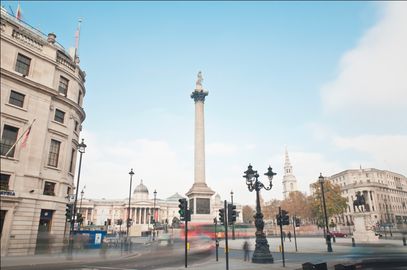

It might seem strange that London's central ceremonial square is named after a Spanish cape off Cadiz. The reason, of course, is that the square commemorates one of the greatest naval battles in the history of a country which takes immense pride in the Royal Navy. The Battle of Trafalgar was fought on 21st October 1805, by the British Navy against the combined navies of France and Spain. The result was a decisive victory for Britain in the war against Napoleon. The British were outnumbered – with 27 ships, against 33 on the Napoleonic side. Yet by the end of the battle, 22 Napoleonic ships had been sunk, while the British lost no ships at all. How was this amazing victory achieved? Some historians claim that the British fleet and sailors were better prepared and trained. Others point to the fact that France had executed many of its best naval officers in the French Revolution – the French ranks were full of inexperienced officers. In reality, full credit for the victory must go to the British Admiral, Lord Horatio Nelson, who broke all of the old-fashioned 'rules' for naval battles when he saw an opportunity to attack the enemy from both sides at once – dividing his fleet into two, against every 'rule' of military history.